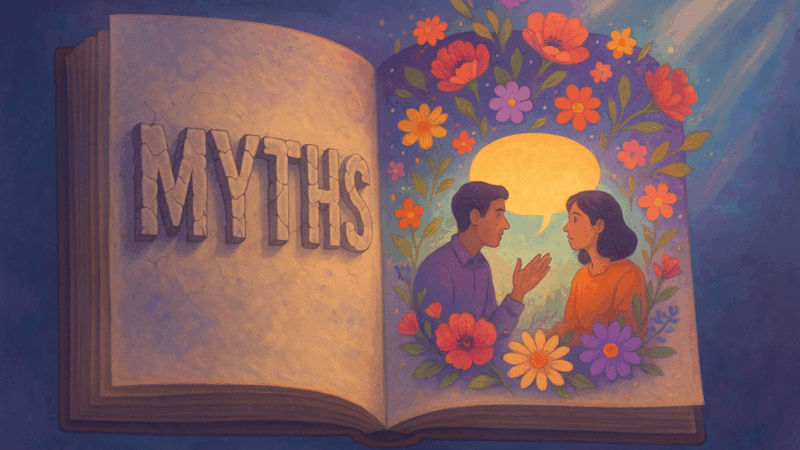Many people believe that unstable relationships stem from “bad choices” in partners or needing to “calm down” and “be more mature.” However, the reality is much more complex. If you’re struggling with abandonment wounds, the challenges are not about a lack of willpower or a character flaw. Instead, they are about how your brain and nervous system are influenced by your past experiences. These wounds often lead to emotional dysregulation and can deeply impact your relationships. The good news is that therapies like DBT and Schema Therapy can help heal abandonment wounds and create healthier, more stable bonds.
Emotional Dysregulation & Relationship Dynamics
If you’ve had difficult past experiences, your nervous system may react more quickly and intensely to perceived threats in close relationships. When you feel “triggered,” it becomes harder to communicate clearly, calmly, and effectively. This is known as emotional dysregulation. Learn more about emotional regulation.
See also: How Emotional Stonewalling Can Be Damaging
How Schemas Reinforce Abandonment Wounds
Schemas are deep-rooted core beliefs shaped by childhood experiences. For example, if you ever felt abandoned or couldn’t consistently rely on a caregiver, you may have developed the belief that abandonment is inevitable. In adult life, this can make rejection feel like it’s just around the corner, even when it’s not.
When schemas are triggered, you might react strongly out of fear or anger and later regret your actions (Kover et al., 2024).
This often leads to a push-pull dynamic: craving closeness one moment, then withdrawing or lashing out the next.
Further reading on GoodTherapy:
How DBT Helps Heal Abandonment Wounds
Dialectical Behavior Therapy (DBT) was originally created for people who feel emotions more intensely than others. DBT doesn’t ask you to stop feeling deeply, it gives you tools to handle big emotions without letting them damage your relationships.
For instance, if your partner doesn’t text back for a few hours, fear of abandonment might trigger panic: “They’re leaving me. They don’t care about me.” Without skills, that panic could lead to emotional suffering, angry texts, or shutting down. DBT teaches you to:
- Notice the rising emotion before it takes over.
- Use grounding and distress tolerance skills to calm your nervous system.
- Respond mindfully instead of impulsively.
Over time, DBT skills break the cycle of highs and lows, helping relationships feel steadier (Linehan, 2015).
Related GoodTherapy articles:
How Schema Therapy Transforms Abandonment Beliefs
Schema Therapy goes deeper by addressing why abandonment fears and rejection sensitivities exist. Schemas act as emotional blueprints formed in childhood, often running unconsciously in relationships.
Take the Abandonment Schema: If early experiences taught you love wasn’t reliable, you may live with a constant fear of being left. Even small signals, like a partner being quiet, can feel like “proof” of rejection.
Schema Therapy helps by:
- Identifying old patterns that keep getting triggered.
- Re-parenting the wounded inner self.
- Practicing healthier ways of relating, such as expressing needs clearly.
Instead of thinking, “If I tell them I’m scared, they’ll leave,” you might learn to say, “When you don’t text back, I feel anxious and worry I might lose you. Can you reassure me?” This invites intimacy instead of conflict.
Schema Therapy is especially effective for abandonment fears and personality-related struggles (Young, Klosko, & Weishaar, 2003).
Learn more about Schema Therapy.
The Bottom Line: Healing Abandonment Wounds is Possible
If your relationships feel like a rollercoaster, it doesn’t mean you’re broken. It means your nervous system and old patterns are working overtime to protect you, sometimes in ways that backfire. With DBT, you can regulate intense emotions in the moment. With Schema Therapy, you can transform the deeper wounds fueling abandonment fears.
Stable, fulfilling relationships are possible. The right therapy provides tools, practice, and support to make healing abandonment wounds a reality.
References
- Kover, L., Pilkington, P. D., & D’Rozario, D. (2024). The association between early maladaptive schemas and relationship satisfaction: A dyadic analysis. Frontiers in Psychology, 15, 1460723. DOI: 3389/fpsyg.2024.1460723
- Linehan, M. M. (2015). DBT® Skills Training Manual (2nd ed.). Guilford Press. View Book
- Young, J. E., Klosko, J. S., & Weishaar, M. E. (2003). Schema Therapy: A Practitioner’s Guide. Guilford Press. View Book
The preceding article was solely written by the author named above. Any views and opinions expressed are not necessarily shared by GoodTherapy.org. Questions or concerns about the preceding article can be directed to the author or posted as a comment below.
Disclaimer: This content was automatically imported from a third-party source via RSS feed. The original source is: https://www.goodtherapy.org/blog/debunking-relationship-myths-healing-abandonment-wounds-with-therapy/. xn--babytilbehr-pgb.com does not claim ownership of this content. All rights remain with the original publisher.





